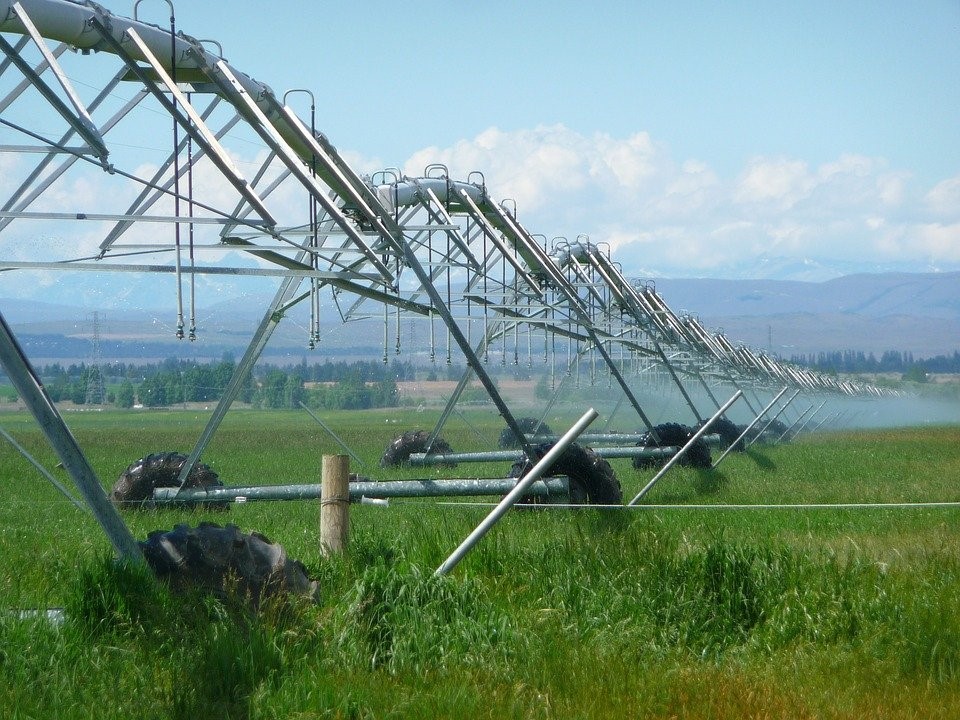Considering irrigation improves simulated mesoscale convective systems and low-level jets
Submitter
Fast, Jerome D
— Pacific Northwest National Laboratory
Area of Research
General Circulation and Single Column Models/Parameterizations
Journal Reference
Qian Y, Z Yang, Z Feng, Y Liu, W Gustafson, L Berg, M Huang, B Yang, and H Ma. 2020. "Neglecting irrigation contributes to the simulated summertime warm-and-dry bias in the central United States." npj Climate and Atmospheric Science, 3(1), 31, 10.1038/s41612-020-00135-w.
Yang Z, Y Qian, Y Liu, L Berg, W Gustafson, Z Feng, K Sakaguchi, J Fast, S Tai, B Yang, M Huang, and H Xiao. 2020. "Understanding irrigation impacts on low-level jets over the Great Plains." Climate Dynamics, 55(3-4), 10.1007/s00382-020-05301-7.
Science

Figure 1. Related studies examine how irrigation impacts different atmospheric phenomena.
Image by MemoryCatcher|Pixabay
The fact that climate models tend to predict an overly warm and dry climate in the central United States has been a persistent issue in the field. Previous studies have proposed possible explanations for this bias, such as underestimation of the evaporative fraction and overestimation of shortwave radiation. This highlight presents two related studies, the first of which tries to tackle this bias by considering irrigation as a previously neglected facet of the modeled land surface. The results suggest considering irrigation increases the frequency of modeled mesoscale convective systems (MCSs). The MCSs are major contributors to summertime precipitation over the central United States. The more frequent modeled MCSs, resulting from considering irrigation, increase local precipitation by up to 65% (on average). Meanwhile, irrigation-induced cooling shows a similar spatial pattern to the typical warm bias seen in global climate models. These results demonstrate the potential of irrigation consideration for solving the warm-and-dry bias.
The purpose of the second study is to understand the impact of irrigation on the Great Plains low-level jet (GPLLJ), a fast-moving ribbon of air across the Great Plains. It remains unclear how the atmospheric states perturbed by irrigation would affect the formation of GPLLJs. This study describes how low-level jets (LLJs) form over the Great Plains, as well as how integrating irrigation into a model affects the representation of LLJs. The results show that irrigation reduces the overall frequency of LLJs, particularly intense ones. Irrigation-induced cooling over the Great Plains causes high pressure at the surface and low pressure in the mid-troposphere, which in combination weaken the winds necessary for LLJ formation.
Impact
This MCS study is among the first to reduce the well-known warm-and-dry model bias through the inclusion of irrigation. Unlike previous studies, this work attempts to physically explain how and why irrigation reduces the bias by considering its direct impact on MCSs. By examining different characteristics associated with the modeled MCSs, the results show that irrigation primarily increases precipitation by increasing the number of MCSs, while all other MCS characteristics remain unchanged. The irrigation-induced cooling is well matched to the commonly seen warming bias over the central United States, emphasizing the need for including irrigation in global climate models.
The LLJ study uniquely links irrigation to the GPLLJs that are important for bringing moisture from the Gulf of Mexico into the continental United States. The results demonstrate that the presence of irrigation tends to reduce the frequency of LLJs, especially intense jets. This suggests a reduction in the amount of moisture coming from the Gulf of Mexico. Additionally, the Great Plains host a large array of wind farms that would generate less electric power due to the diminished wind intensity.
Summary
Researchers performed a set of continental-scale simulations to investigate the irrigation effect on MCSs and low-level winds and published the results in two separate papers. The first paper employed a MCS tracking algorithm to track the simulated MCSs and attributes the precipitation increase to an increased number of MCSs. The researchers attributed the increase in the frequency of MCSs to the more favorable thermodynamic conditions caused by irrigation. The increased precipitation also alleviates the warm bias commonly seen in GCMs.
The second study found that considering irrigation better simulates the spatial pattern of LLJs when compared with reference data sets. Adding irrigation tends to reduce the frequency of intense GPLLJs. The identified favorable conditions for forming GPLLJs feature a ridge pattern in the mid-troposphere and a strong temperature gradient in the lower levels. Irrigation, however, counteracts these favorable conditions by introducing cooling and a resulting high-pressure pattern at the surface and low pressure at downwind mid-troposphere.
Given the importance of irrigation in addressing the warm-and-dry bias over the central United States, these results suggest that GCMs need to consider irrigation to reduce such biases. Irrigation’s impact on LLJs suggests that irrigation can significantly impact future projections of moisture transport and wind energy over the Great Plains.
Keep up with the Atmospheric Observer
Updates on ARM news, events, and opportunities delivered to your inbox
ARM User Profile
ARM welcomes users from all institutions and nations. A free ARM user account is needed to access ARM data.


















